Consider this system equation where x(t) = input
$$y(t)=x(t) \cos(3t)$$
Using the superposition theorem, we can prove that the system is linear.
For input x1(t), the output is $$y_1(t)=x_1(t) \cos(3t)$$ For input x2(t), the output is $$y_2(t)=x_2(t) \cos(3t)$$
For input [ x1(t) + x2(t) ], the output is $$y(t)=[x_1(t)+x_2(t)] \cos(3t)$$ That is, $$y(t)=y_1(t)+y_2(t)$$ Hence the system is linear.
But I can't get the meaning of this. y(t) is linear with respect to x(t) means when I plot a graph of y(t) v/s x(t), I should get a straight line passing through the origin.
But for the above case, it's not a straight line.
Please clarify this confusion.
Also, if it is found to be linear, is the system linear for any x(t) or not? I mean, if we take x(t)=tu(t) or x(t)=t^2u(t), is the system linear in both cases?
